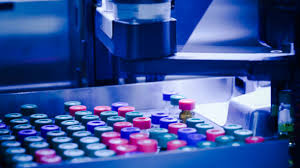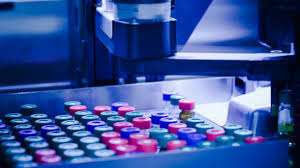According to Vice Chairman Terry Hisey (U.S. Life Sciences Group at Deloitte LLP, “Good Pill Hunting, Business Life,” May 2011), counterfeit drugs represent an expanding grey market estimated at about USD 200 bn. Counterfeit drugs impact manufacturers, distributors and consumers in the Americas, Japan, Europe and emerging markets of Africa and Asia.
The World Health Organization (WHO) believes the problem of counterfeit pharmaceuticals is worsening. WHO estimates that approximately 50 percent of pharmaceutical drugs sold online are counterfeit. These counterfeit drugs cause the deaths of 2,000 or more persons around the globe. Counterfeit drugs diminish pharmaceutical manufacturers’ brand and end-user confidence in their use.
First, do no Harm
Therapeutic products, including pharmaceutical drugs, must be safe to use. According to author Dennis Jenke (“Compatibility of Pharmaceutical Solutions and Contact Materials,” 2013) transparency in pharmaceutical packaging is key to consumer protection.
Negative interactions between drugs and packaging products can cause harm. One of the goals of track & trace for pharmaceutical purposes must ensure that packaging and processes related to packaging are inert values. Therefore, the alignment of drug development and safety is essential to ensuring transparency in drug packaging.

Goals of Tracking and Tracing Prescription Drugs
FDA requires that each drug present a numeric identifier. This identifier must be applied to the drug at point of manufacture (or at the point of remanufacture, to include the identifier). FDA goals of the identifier include authentication and validation of pharmaceutical products.
Costs of radio-frequency identification (RFID) labels are estimated at up to $0.25 per unit for high frequency or ultra-high frequency tags. Manufacturers and distributors want to synchronize database and product aggregation with the identification process.
Transparency in Pharmaceutical Packaging
Potentially negative interactions include binding, or sorption, the potential for packaging materials to uptake medicine components. This leaching effect can reduce drug efficacy, creating secondary or toxic reactions. The dosage form (in solid, liquid or gaseous state) may inter-react with the packaging system (e.g. syringes, canisters, bags, bottles or vials).
Transparent drug manufacture and packaging must include materials used in construction (e.g. glass, HDPE resin, metals); packaging component(s), including any portion of the container closure/system (e.g. ampules or bottles); liners (e.g. tubing); closures (e.g. stoppers or caps); seals (inner or over-seals); ports (LVPs); wrappings or labels used in identifying containers; and any secondary packaging (i.e., anything not in direct contact with the pharmaceutical product).
Cost-effective Pharmaceutical Packaging Today
Increasing compliance demands leave many companies with more questions than answers. One thing is certain: the Electronic Product Code standard (EPC) will expand as regulators refine standards and goals. Establishing clear priorities, then initiating a small sample test, may help companies control costs while ensuring successful outcomes.




